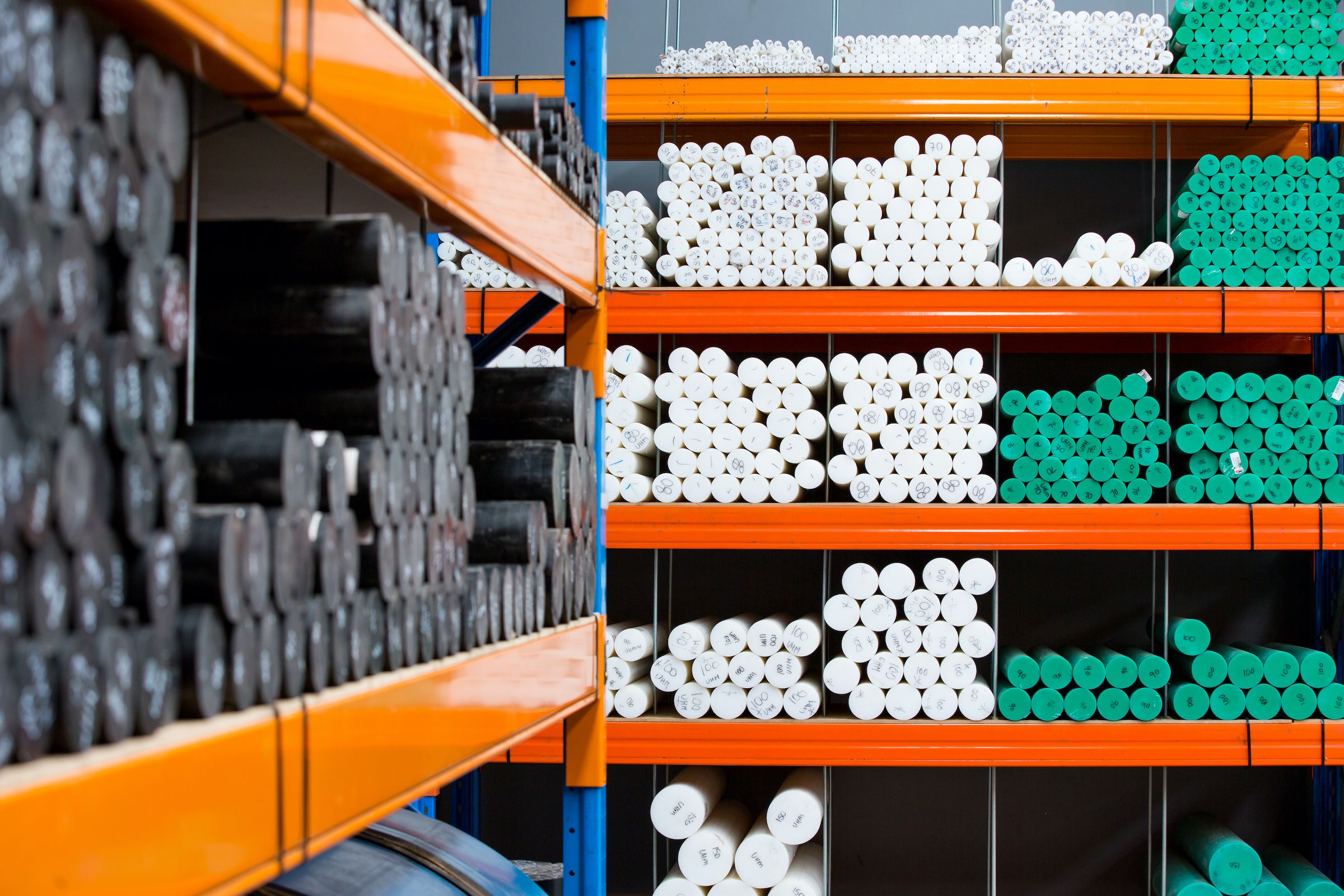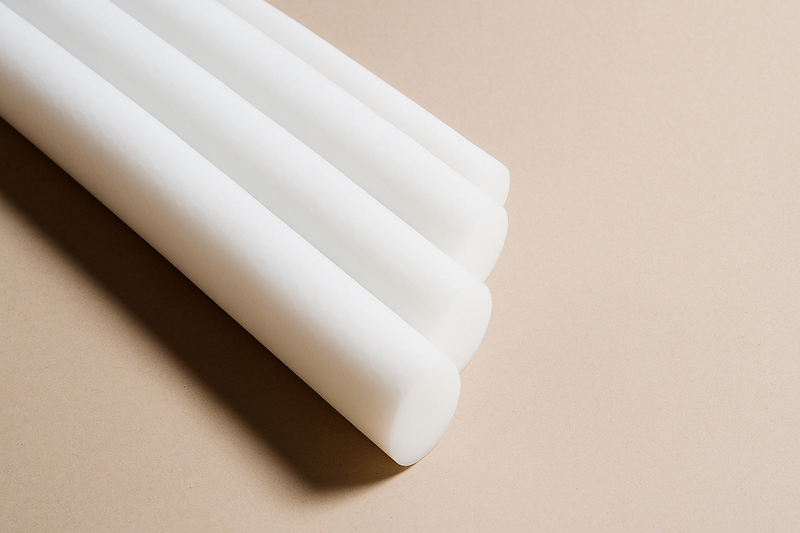At a glance
- Polycarbonate is a high-performance thermoplastic renowned for its exceptional strength, clarity, heat resistance, and versatility.
- Its lightweight and durable properties reduce costs, improve safety, and support sustainable manufacturing through recyclability.
- Industries like construction, automotive, electronics, medical, and manufacturing rely on polycarbonate.
Polycarbonate (PC) is one of the most widely used engineering plastics, recognised for its strength, optical clarity, and versatility. This high-performance engineering plastic has become a preferred material in industries that demand precision, reliability, and safety. They are known for being lightweight yet exceptionally durable.
The unique features of PC have made it a better choice for construction, automotive, manufacturing, medical and electronics, as compared to many traditional materials like glass and metal.
This blog covers everything you need to know about polycarbonate plastics and the industries it is used in.
Overview of Polycarbonate Plastics
Polycarbonate (PC) is a thermoplastic polymer renowned for its exceptional combination of strength, clarity, and versatility. It is extremely durable and lightweight, making it ideal for demanding industrial applications that require strength without added weight.
Polycarbonate can withstand substantial mechanical stress without cracking or breaking, while maintaining optical transparency similar to glass. This makes it an excellent alternative to traditional materials like glass.
Polycarbonate engineering plastic is produced using bisphenol A (BPA) and phosgene through a controlled polymerisation process. Modern BPA-free and melt-polymerised processes are also used in certain grades. This creates a material that can be thermoformed, machined, cut, and fabricated to suit a wide variety of design and engineering requirements.
Key Properties of Polycarbonate
Polycarbonate stands out because it combines multiple high-value performance characteristics in a single material. Below are the most notable properties of polycarbonate:
- High Impact Resistance: PC is virtually unbreakable, offering superior protection compared to glass and other plastics.
- Optical Clarity: Polycarbonate offers excellent light transmission, similar to glass, but with greater durability.
- Heat Resistance: This high-performance engineering plastic maintains shape and structural integrity even at elevated temperatures (around 115–125°C for continuous use, with short-term peaks slightly higher).
- Lightweight: PC is significantly lighter than glass or metal, making it easier to handle and reducing handling and transportation costs.
- UV Resistance: Although PC is not naturally UV resistant, when coated or treated, it withstands prolonged outdoor exposure without yellowing or degrading.
- Ease of Fabrication: Polycarbonate plastics can be moulded, cut, drilled, and thermoformed into complex shapes with minimal processing challenges.
Advantages of Polycarbonate (PC)
Polycarbonate offers several benefits compared to other materials, giving it an upper hand in various applications across industries. Here are some of the major advantages of polycarbonate engineering plastics:
- Extended Service Life: Its durability and resistance to impact reduce the frequency of repairs and replacements.
- Versatile Design Options: Polycarbonate sheets support complex structural requirements, from protective barriers to intricate electrical components.
- Enhanced Safety: PC has shatter-resistant qualities that reduce the risk of failure in environments where glass or brittle plastics could break.
- Cost Efficiency: This engineering plastic's lightweight construction lowers transportation costs and simplifies installation processes.
- Recyclable Solutions: Although PC is not the most recycled engineering plastic, many grades of polycarbonate can be mechanically or chemically recycled, making it a responsible choice for companies focused on sustainability and environmental goals.
Industries That Rely on Polycarbonate Plastic
Polycarbonate is a material of choice across a wide range of sectors. Below are some of the key industries that depend on polycarbonate for critical applications.
Construction and Building
Polycarbonate has become a preferred material in modern construction due to its strength and weather resistance. It is widely used in roofing sheets, skylights, canopies, and protective barriers. Its lightweight nature makes installation easier and reduces structural load compared to traditional glass, while still offering excellent optical clarity.
UV-resistant grades maintain performance and transparency even in harsh outdoor conditions, making them ideal for both commercial and industrial buildings. These properties result in lower maintenance costs and longer service life.
Automotive and Transport
Polycarbonate plays a critical role in creating lightweight, durable, and safety-focused components in the automotive industry. For instance, it is commonly used for headlamp lenses, interior trims, lightweight body panels, and glazing applications. Polycarbonate helps manufacturers improve fuel efficiency and vehicle performance by replacing heavier materials like glass or metal.
Its impact resistance and optical clarity ensure headlights remain clear and durable under tough driving conditions. PC-ABS blends are also widely used in interiors for their heat resistance and mouldability. This high-performing polymer provides similar benefits in transport sectors, such as aviation and rail, by reducing weight and supporting compliance with safety and durability standards.
Electronics and Electrical
Polycarbonate’s electrical insulation properties and heat resistance make it an excellent choice for electrical housings, switchgear, connectors, and lighting fixtures. It provides both safety and durability in environments where components must withstand heat, mechanical stress, and continuous operation. Its versatility allows manufacturers to create precisely engineered parts while keeping components lightweight.
Polycarbonate is often used for protective casings and covers in consumer electronics due to its clarity and strength. This combination of functionality and safety ensures reliable performance across residential, commercial, and industrial electrical systems.
Medical Industry
The medical industry also heavily relies on polycarbonate for its wide range of applications. For instance, polycarbonate plastic sheets are used in applications where clarity, sterilisation compatibility, and biocompatibility are required. It is used in the production of protective face shields, diagnostic tools, sterile packaging, and surgical equipment. Unlike glass, polycarbonate does not shatter, making it safer for both healthcare professionals and patients.
Certain medical-grade polycarbonates can be sterilised using autoclaving, ethylene oxide, or gamma radiation without losing structural integrity. Its optical clarity allows for precise visibility in diagnostic instruments, while its lightweight properties improve comfort and handling.
Industrial Manufacturing
Polycarbonate also plays a vital role in industrial manufacturing for worker safety and equipment protection. It is commonly used to create machine guards, safety covers, and impact-resistant enclosures. These components prevent accidents by providing a strong, shatter-resistant barrier between workers and machinery, thereby protecting them from potential hazards.
PC easily integrates with various machines and production lines because it can be fabricated into customised shapes. Its durability also ensures that these safety solutions withstand continuous use in harsh environments.
Read more: Polycarbonate vs Other Engineering Plastics: What's the Difference?
The bottom line is that polycarbonate’s exceptional strength, versatility, and performance have established it as a go-to material across a wide range of industries. From construction and automotive to medical and electronics, it offers solutions that meet the demands of modern engineering and design.
If you are looking for premium-grade polycarbonate materials, consider partnering with a reliable engineering plastic supplier. Visit ePOL’s online portal to explore our range or contact the team for expert advice.
FAQs
Is polycarbonate safe for food and medical applications?
Yes, certain medical and food-grade polycarbonate materials are specifically formulated to meet strict health and safety standards. These grades are commonly used for sterile medical equipment, protective shields, and food processing tools. BPA-free formulations are preferred for sensitive applications.
How does polycarbonate perform under outdoor exposure and UV light?
Polycarbonate performs exceptionally well outdoors when UV-stabilised or coated. These treatments prevent yellowing, clouding, or degradation caused by prolonged sun exposure. This makes it ideal for roofing, skylights, signage, and protective barriers, where long-term clarity and durability are essential.
Can polycarbonate be recycled or reused?
Yes, many grades of polycarbonate are fully recyclable. After use, the material can be reprocessed into new products, supporting sustainability initiatives and circular manufacturing practices.
What is the typical lifespan of polycarbonate products?
When properly installed and maintained, polycarbonate products can last 10–20 years or more, depending on environmental conditions and usage. UV-protected grades can exceed this lifespan, particularly in architectural or outdoor applications.








